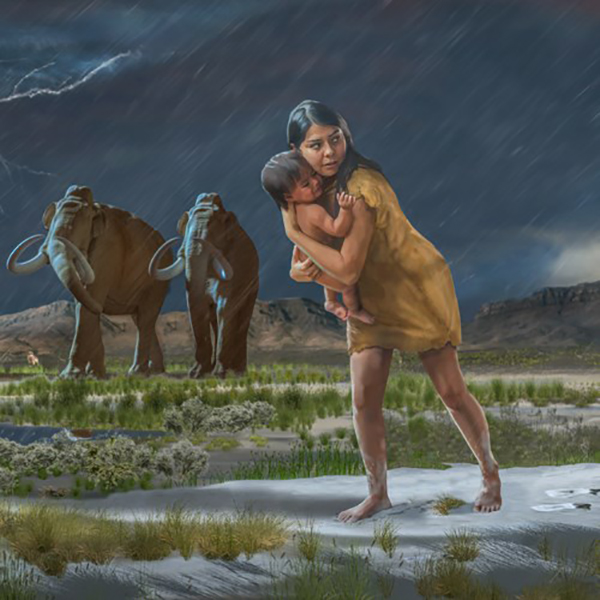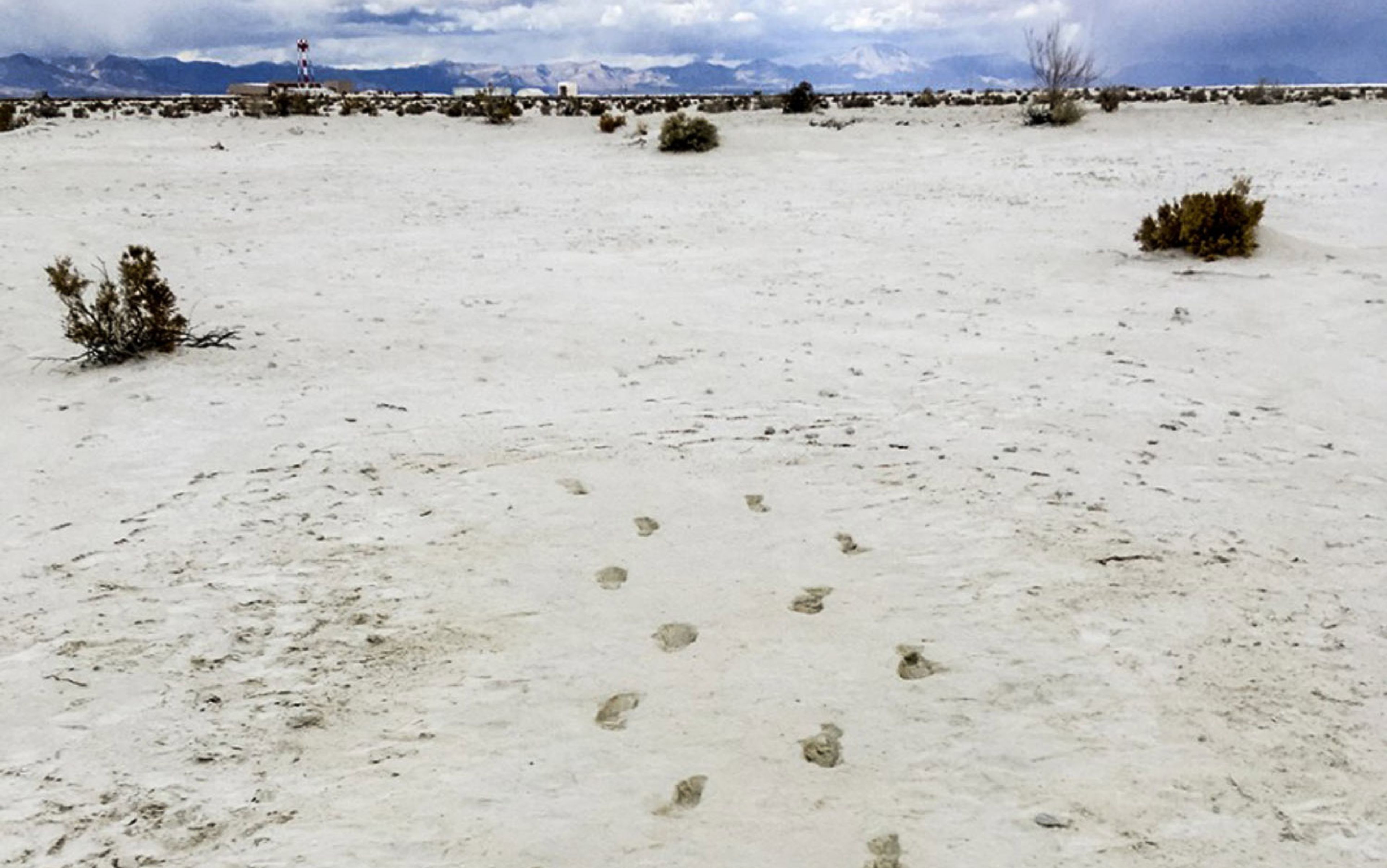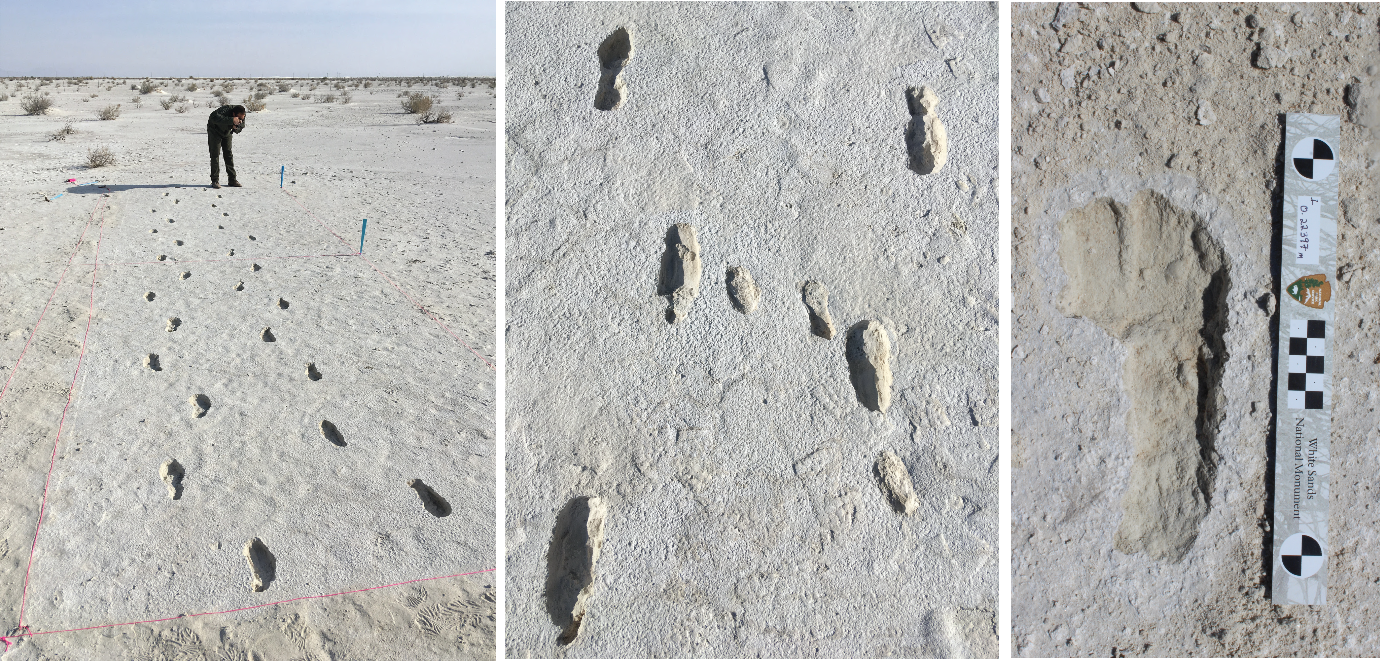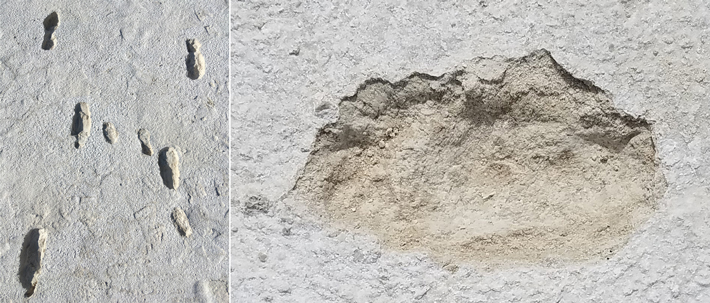Introduction
Approximately 22,000 to 23,000 years ago, a remarkable journey unfolded at Lake Otero, a vast Ice Age lake that once teemed with megafauna. This journey, undertaken by a young woman and possibly her child, has left behind an extraordinary archaeological find that reshapes our understanding of early human presence in the Americas.
The Journey of Survival
A Young Woman’s Epic Voyage
Evidence suggests that the young woman embarked on two perilous journeys, each separated by several hours. Remarkably, she carried a toddler at least once during these treks, highlighting the challenges faced by early humans in a world filled with both opportunity and danger. The environment around Lake Otero was rich with wildlife, including mammoths, ground sloths, camels, dire wolves, and American lions, presenting both potential resources and threats.

Life in the Ice Age
The landscape surrounding Lake Otero was not just a backdrop; it was a dynamic ecosystem. The presence of these extinct megafauna indicates that early humans were adept at navigating their environment, utilizing the available resources for survival. This vibrant setting offers insight into the lives of our ancestors, revealing a world teeming with both challenges and possibilities.

The Discovery of Footprints
Unveiling the Past at White Sands National Park
The trail left behind by this young woman and her companion spans 1.5 kilometers and consists of over 400 human footprints. Located in present-day White Sands National Park in New Mexico, these footprints represent the oldest known evidence of human presence in the Americas. This discovery challenges previous notions about when humans first arrived on the continent and emphasizes the adaptability and resilience of early populations.

Significance of the Footprints
The footprints serve not only as a physical record of human activity but also as a poignant reminder of the journeys taken by our ancestors. They provide a unique glimpse into their daily lives, social structures, and the bonds formed during challenging times. Each footprint tells a story of survival, familial connections, and the indomitable spirit of early humans.

Conclusion
The discovery of ancient footprints at Lake Otero is a groundbreaking revelation that reshapes our understanding of human history in the Americas. As we piece together the lives of those who walked the shores of this Ice Age lake, we gain invaluable insights into our shared past. The echoes of their journeys remind us of the resilience and ingenuity of humanity as we continue to explore and uncover the mysteries of our origins.

